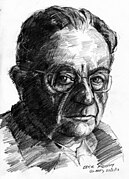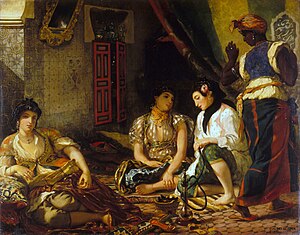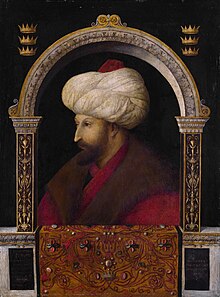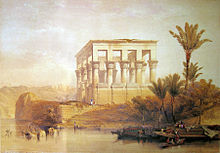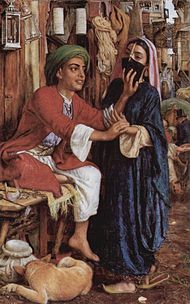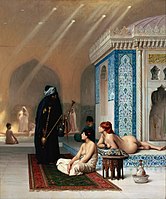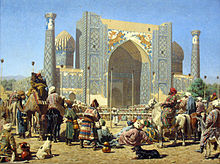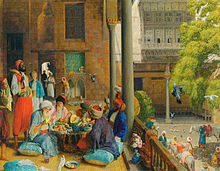Humanistic psychology is a psychological perspective that rose to prominence in the mid-20th century in answer to the limitations of Sigmund Freud's psychoanalytic theory and B. F. Skinner's behaviorism. With its roots running from Socrates through the Renaissance, this approach emphasizes individuals' inherent drive towards self-actualization, the process of realizing and expressing one's own capabilities and creativity.
It helps the client gain the belief that all people are inherently good. It adopts a holistic approach to human existence and pays special attention to such phenomena as creativity, free will, and positive human potential. It encourages viewing ourselves as a "whole person" greater than the sum of our parts and encourages self exploration rather than the study of behavior in other people. Humanistic psychology acknowledges spiritual aspiration as an integral part of the psyche. It is linked to the emerging field of transpersonal psychology.
Primarily, this type of therapy encourages a self-awareness and mindfulness that helps the client change their state of mind and behaviour from one set of reactions to a healthier one with more productive self-awareness and thoughtful actions. Essentially, this approach allows the merging of mindfulness and behavioural therapy, with positive social support.
In an article from the Association for Humanistic Psychology, the benefits of humanistic therapy are described as having a "crucial opportunity to lead our troubled culture back to its own healthy path. More than any other therapy, Humanistic-Existential therapy models democracy. It imposes ideologies of others upon the client less than other therapeutic practices. Freedom to choose is maximized. We validate our clients' human potential."
In the 20th century, humanistic psychology was referred to as the "third force" in psychology, distinct from earlier, even less humanistic approaches of psychoanalysis and behaviorism. In our post industrial society, humanistic psychology has become more significant; for example, neither psychoanalysis nor behaviorism could have birthed emotional intelligence.
Its principal professional organizations in the US are the Association for Humanistic Psychology and the Society for Humanistic Psychology (Division 32 of the American Psychological Association). In Britain, there is the UK Association for Humanistic Psychology Practitioners.
Origins
The other sources of inspiration include the philosophies of existentialism and phenomenology.
Conceptual origins
The humanistic approach has its roots in phenomenological and existentialist thought). Eastern philosophy and psychology also play a central role in humanistic psychology, as well as Judeo-Christian philosophies of personalism, as each shares similar concerns about the nature of human existence and consciousness.
Carl Rogers (1902–1987), one of the founders of humanistic psychology.
As behaviorism grew out of Ivan Pavlov's work with the conditioned reflex, and laid the foundations for academic psychology in the United States associated with the names of John B. Watson and B.F. Skinner, Abraham Maslow gave behaviorism the name "the second force". Historically "the first force" were psychologists like Sigmund Freud, Alfred Adler, Erik Erikson, Carl Jung, Erich Fromm, Karen Horney, Melanie Klein, Harry Stack Sullivan, and others.
In the late 1930s, psychologists, interested in the uniquely human issues, such as the self, self-actualization, health, hope, love, creativity, nature, being, becoming, individuality, and meaning—that is, a concrete understanding of human existence, included Abraham Maslow, Carl Rogers, and Clark Moustakas, who were interested in founding a professional association dedicated to a psychology focused on these features of human capital demanded by post-industrial society.
The humanistic psychology perspective is summarized by five core principles or postulates of humanistic psychology first articulated in an article written by James Bugental in 1964 and adapted by Tom Greening, psychologist and long-time editor of the Journal of Humanistic Psychology. The five basic principles of humanistic psychology are:
- Human beings, as human, supersede the sum of their parts. They cannot be reduced to components.
- Human beings have their existence in a uniquely human context, as well as in a cosmic ecology.
- Human beings are aware and are aware of being aware - i.e., they are conscious. Human consciousness always includes an awareness of oneself in the context of other people.
- Human beings have the ability to make choices and therefore have responsibility.
- Human beings are intentional, aim at goals, are aware that they cause future events, and seek meaning, value, and creativity.
Practical origins
WWII created practical pressures on military psychologists, they had more patients to see and care for than time or resources permitted. The origins of group therapy are here. Eric Berne's progression of books shows this transition out of what we might call pragmatic psychology of WW II into his later innovation, Transactional Analysis, one of the most influential forms of humanistic Popular Psychology of the later 1960s-1970.Orientation to scientific research
Humanistic psychologists generally do not believe that we will understand human consciousness and behavior through Cartesian-Newtonian scientific research. The objection that humanistic psychologists have to traditional research methods is that they are derived from and suited for the physical sciences and not especially appropriate to studying the complexities and nuances of human meaning-making.However, humanistic psychology has involved scientific research of human behavior since its inception. For example:
- Abraham Maslow proposed many of his theories of human growth in the form of testable hypotheses, and he encouraged human scientists to put them to the test.
- Shortly after the founding of the American Association of Humanistic Psychology, its president, psychologist Sidney Jourard, began his column by declaring that "research" is a priority. "Humanistic Psychology will be best served if it is undergirded with research that seeks to throw light on the qualities of man that are uniquely human" (emphasis added).
- In May 1966, the AAHP release a newsletter editorial that confirmed the humanistic psychologist's "allegiance to meaningfulness in the selection of problems for study and of research procedures, and an opposition to a primary emphasis on objectivity at the expense of significance." This underscored the importance of research to humanistic psychologists as well as their interest in special forms of human science investigation.
- Likewise, in 1980, the American Psychological Association's publication for humanistic psychology (Division 32 of APA) ran an article titled, What makes research humanistic? As Donald Polkinghorne notes, "Humanistic theory does not propose that human action is completely independent of the environment or the mechanical and organic orders of the body, but it does suggest that, within the limits of experienced meanings, persons as unities can choose to act in ways not determined by prior events...and this is the theory we seek to test through our research" (p. 3).
- favors letting the methods be derived from the subject matter and not uncritically adopting the methods of natural science, and
- advocates for methodological pluralism. Consequently, much of the subject matter of psychology lends itself to qualitative approaches (e.g. the lived experience of grief), and quantitative methods are mainly appropriate when something can be counted without leveling the phenomena (e.g. the length of time spent crying).
Development of the field
These preliminary meetings eventually led to other developments, which culminated in the description of humanistic psychology as a recognizable "third force" in psychology (first force: psychoanalysis, second force: behaviorism). Significant developments included the formation of the Association for Humanistic Psychology (AHP) in 1961 and the launch of the Journal of Humanistic Psychology (originally "The Phoenix") in 1961.Subsequently, graduate programs in Humanistic Psychology at institutions of higher learning grew in number and enrollment. In 1971, humanistic psychology as a field was recognized by the American Psychological Association (APA) and granted its own division (Division 32) within the APA. Division 32 publishes its own academic journal called The Humanistic Psychologist.
The major theorists considered to have prepared the ground for Humanistic Psychology are Otto Rank, Abraham Maslow, Carl Rogers and Rollo May. Maslow was heavily influenced by Kurt Goldstein during their years together at Brandeis University. Psychoanalytic writers also influenced humanistic psychology. Maslow himself famously acknowledged his "indebtedness to Freud" in Towards a Psychology of Being Other psychoanalytic influences include the work of Wilhelm Reich, who discussed an essentially 'good', healthy core self and Character Analysis (1933), and Carl Gustav Jung's mythological and archetypal emphasis. Other noteworthy inspirations for, and leaders of the movement include Roberto Assagioli, Gordon Allport, Medard Boss, Martin Buber (close to Jacob L. Moreno), James Bugental, Viktor Frankl, Erich Fromm, Hans-Werner Gessmann, Amedeo Giorgi, Kurt Goldstein, Sidney Jourard, R. D. Laing, Clark Moustakas, Lewis Mumford, Fritz Perls, Anthony Sutich, Thomas Szasz, Kirk J. Schneider, and Ken Wilber. Carl Rogers was trained in psychoanalysis before developing humanistic psychology.
Counseling and therapy
Diagram illustrating the "hierarchy of needs" theory of Abraham Maslow (1908–1970). Click to enlarge.
The aim of humanistic therapy is usually to help the client develop a stronger and healthier sense of self, also called self-actualization. Humanistic therapy attempts to teach clients that they have potential for self-fulfillment. This type of therapy is insight-based, meaning that the therapist attempts to provide the client with insights about their inner conflicts.
Approaches
Humanistic psychology includes several approaches to counseling and therapy. Among the earliest approaches we find the developmental theory of Abraham Maslow, emphasizing a hierarchy of needs and motivations; the existential psychology of Rollo May acknowledging human choice and the tragic aspects of human existence; and the person-centered or client-centered therapy of Carl Rogers, which is centered on the client's capacity for self-direction and understanding of his or her own development. Client-centered therapy is non-directive; the therapist listens to the client without judgement, allowing the client to come to insights by themselves. The therapist should ensure that all of the client’s feelings are being considered and that the therapist has a firm grasp on the concerns of the client while ensuring that there is an air of acceptance and warmth. Client-centered therapist engages in active listening during therapy sessions.A therapist cannot be completely non-directive; however, a nonjudgmental, accepting environment that provides unconditional positive regard will encourage feelings of acceptance and value.
Existential psychotherapies, an application of humanistic psychology, applies existential philosophy, which emphasizes the idea that humans have the freedom to make sense of their lives. They are free to define themselves and do whatever it is they want to do. This is a type of humanistic therapy that forces the client to explore the meaning of their life, as well as its purpose. There is a conflict between having freedoms and having limitations. Examples of limitations include genetics, culture, and many other factors. Existential therapy involves trying to resolve this conflict.
Another approach to humanistic counseling and therapy is Gestalt therapy, which puts a focus on the here and now, especially as an opportunity to look past any preconceived notions and focus on how the present is affected by the past. Role playing also plays a large role in Gestalt therapy and allows for a true expression of feelings that may not have been shared in other circumstances. In Gestalt therapy, non-verbal cues are an important indicator of how the client may actually be feeling, despite the feelings expressed.
Also part of the range of humanistic psychotherapy are concepts from depth therapy, holistic health, encounter groups, sensitivity training, marital and family therapies, body work, the existential psychotherapy of Medard Boss, and Positive Psychology.
Most recently Compassionate Communication, the rebranding of Nonviolent Communication of Marshall Rosenberg seems to be the leading edge of innovation in this field because it is one of very few psychologies with both a simple and clear model of the human psyche and a simple and clear methodology, suitable for any two persons to address and resolve interpersonal conflict without expert intervention, a first in the field.
George Kelly's humanistic theory is based on Fundamental Postulate, where a person acts on anticipation of future events. Stating that a person's actions are based on expectation of possible events and interpretation from past circumstances.
Empathy and self-help
Empathy is one of the most important aspects of humanistic therapy. This idea focuses on the therapist’s ability to see the world through the eyes of the client. Without this, therapists can be forced to apply an external frame of reference where the therapist is no longer understanding the actions and thoughts of the client as the client would, but strictly as a therapist which defeats the purpose of humanistic therapy. Included in empathizing, unconditional positive regard is one of the key elements of humanistic psychology. Unconditional positive regard refers to the care that the therapist needs to have for the client. This ensures that the therapist does not become the authority figure in the relationship allowing for a more open flow of information as well as a kinder relationship between the two. A therapist practicing humanistic therapy needs to show a willingness to listen and ensure the comfort of the patient where genuine feelings may be shared but are not forced upon someone. Marshall Rosenberg, one of Carl Rogers' students, emphasizes empathy in the relationship in his concept of Nonviolent Communication.Self-help is also part of humanistic psychology: Sheila Ernst and Lucy Goodison have described using some of the main humanistic approaches in self-help groups. Humanistic Psychology is applicable to self-help because it is oriented towards changing the way a person thinks. One can only improve once they decide to change their ways of thinking about themselves, once they decide to help themselves. Co-counselling, which is an approach based purely on self-help, is regarded as coming from humanistic psychology as well. Humanistic theory has had a strong influence on other forms of popular therapy, including Harvey Jackins' Re-evaluation Counselling and the work of Carl Rogers, including his student Eugene Gendlin; as well as on the development of the Humanistic Psychodrama by Hans-Werner Gessmann since the 80s.
The ideal self
The ideal self and real self involve understanding the issues that arise from having an idea of what you wish you were as a person, and having that not match with who you actually are as a person (incongruence). The ideal self is what a person believes should be done, as well as what their core values are. The real self is what is actually played out in life. Through humanistic therapy, an understanding of the present allows clients to add positive experiences to their real self-concept. The goal is to have the two concepts of self become congruent. Rogers believed that only when a therapist was able to be congruent, a real relationship occurs in therapy. It is much easier to trust someone who is willing to share feelings openly, even if it may not be what the client always wants; this allows the therapist to foster a strong relationship.Non-pathological
Humanistic psychology tends to look beyond the medical model of psychology in order to open up a nonpathologizing view of the person. This usually implies that the therapist downplays the pathological aspects of a person's life in favour of the healthy aspects. Humanistic psychology tries to be a science of human experience, focusing on the actual lived experience of persons. Therefore, a key ingredient is the actual meeting of therapist and client and the possibilities for dialogue to ensue between them. The role of the therapist is to create an environment where the client can freely express any thoughts or feelings; he does not suggest topics for conversation nor does he guide the conversation in any way. The therapist also does not analyze or interpret the client’s behavior or any information the client shares. The role of the therapist is to provide empathy and to listen attentively to the client.Societal applications
Social change
- Alfred Adler argued that achieving a sense of community feeling is essential to human development.
- Medard Boss defined health as an openness to the world, and unhealth as anything in the psyche or society that blocked or constricted that openness.
- Erich Fromm argued that the totalitarian impulse is rooted in people's fear of the uncertainties and responsibilities of freedom – and that the way to overcome that fear is to dare to live life fully and compassionately.
- R. D. Laing analyzed the political nature of "normal", everyday experience.
- Rollo May said that people have lost their values in the modern world, and that their health and humanity depends on having the courage to forge new values appropriate to the challenges of the present.
- Wilhelm Reich argued that psychological problems are often caused by sexual repression, and that the latter is influenced by social and political conditions – which can and should be changed.
- Carl Rogers came to believe that political life did not have to consist of an endless series of winner-take-all battles, that it could and should consist of an ongoing dialogue among all parties. If such dialogue were characterized by respect among the parties and authentic speaking by each party, compassionate understanding and – ultimately – mutually acceptable solutions could be reached.
- Virginia Satir was convinced that her approach to family therapy would enable individuals to expand their consciousness, become less fearful, and bring communities, cultures, and nations together.
There have been many other attempts to articulate humanistic-psychology-oriented approaches to social change. For example, in 1979 psychologist Kenneth Lux and economist Mark A. Lutz called for a new economics based on humanistic psychology rather than utilitarianism. Also in 1979, California state legislator John Vasconcellos published a book calling for the integration of liberal politics and humanistic-psychological insight. From 1979–1983 the New World Alliance, a U.S. political organization based in Washington, D.C., attempted to inject humanistic-psychology ideas into political thinking and processes; sponsors of its newsletter included Vasconcellos and Carl Rogers.
In 1989 Maureen O'Hara, who had worked with both Carl Rogers and Paolo Freire, pointed to a convergence between the two thinkers. According to O'Hara, both focus on developing critical consciousness of situations which oppress and dehumanize. Throughout the 1980s and 1990s, Institute of Noetic Sciences president Willis Harman argued that significant social change cannot occur without significant consciousness change. In the 21st century, humanistic psychologists such as Edmund Bourne, Joanna Macy, and Marshall Rosenberg continued to apply psychological insights to social and political issues.
In addition to its uses in thinking about social change, humanistic psychology is considered to be the main theoretical and methodological source of humanistic social work.
Social work
After psychotherapy, social work is the most important beneficiary of the humanistic psychology's theory and methodology. These have produced a deep reform of the modern social work theory and practice, leading, among others, to the occurrence of a particular theory and methodology: Humanistic Social Work. Most values and principles of the humanistic social work practice, described by Malcolm Payne in his book Humanistic Social Work: Core Principles in Practice, namely creativity in human life and practice, developing self and spirituality, developing security and resilience, accountability, flexibility and complexity in human life and practice, directly originate from the humanistic psychological theory and humanistic psychotherapy practice.Also, the representation and approach of the client (as human being) and social issue (as human issue) in social work is made from the humanistic psychology position. According to Petru Stefaroi, the way humanistic representation and approach of the client and his personality is realized is, in fact, the theoretical-axiological and methodological foundation of humanistic social work.
In setting goals and the intervention activities, in order to solve social/human problems, there prevail critical terms and categories of the humanistic psychology and psychotherapy, such as: self-actualization, human potential, holistic approach, human being, free will, subjectivity, human experience, self-determination/development, spirituality, creativity, positive thinking, client-centered and context-centered approach/intervention, empathy, personal growth, empowerment.
Creativity in corporations
Humanistic psychology's emphasis on creativity and wholeness created a foundation for new approaches towards human capital in the workplace stressing creativity and the relevance of emotional interactions. Previously the connotations of "creativity" were reserved for and primarily restricted to, working artists. In the 1980s, with increasing numbers of people working in the cognitive-cultural economy, creativity came to be seen as a useful commodity and competitive edge for international brands. This led to corporate creativity training in-service trainings for employees, led pre-eminently by Ned Herrmann at G.E. in the late 1970s.Humanistic psychology concepts were embraced in education and social work, peaking in the 1970s-1980s in North America. However, as with whole language theory, training practice were too superficial in most institutional settings. Though humanistic psychology raised the bar of insight and understanding of the whole person, professionally it is primarily practiced today by individual licensed counselors and therapists. Outside of that humanistic psychology provides the foundation for virtually every method of Energy Medicine; but little coherence exists yet in this field to discuss it easily.



